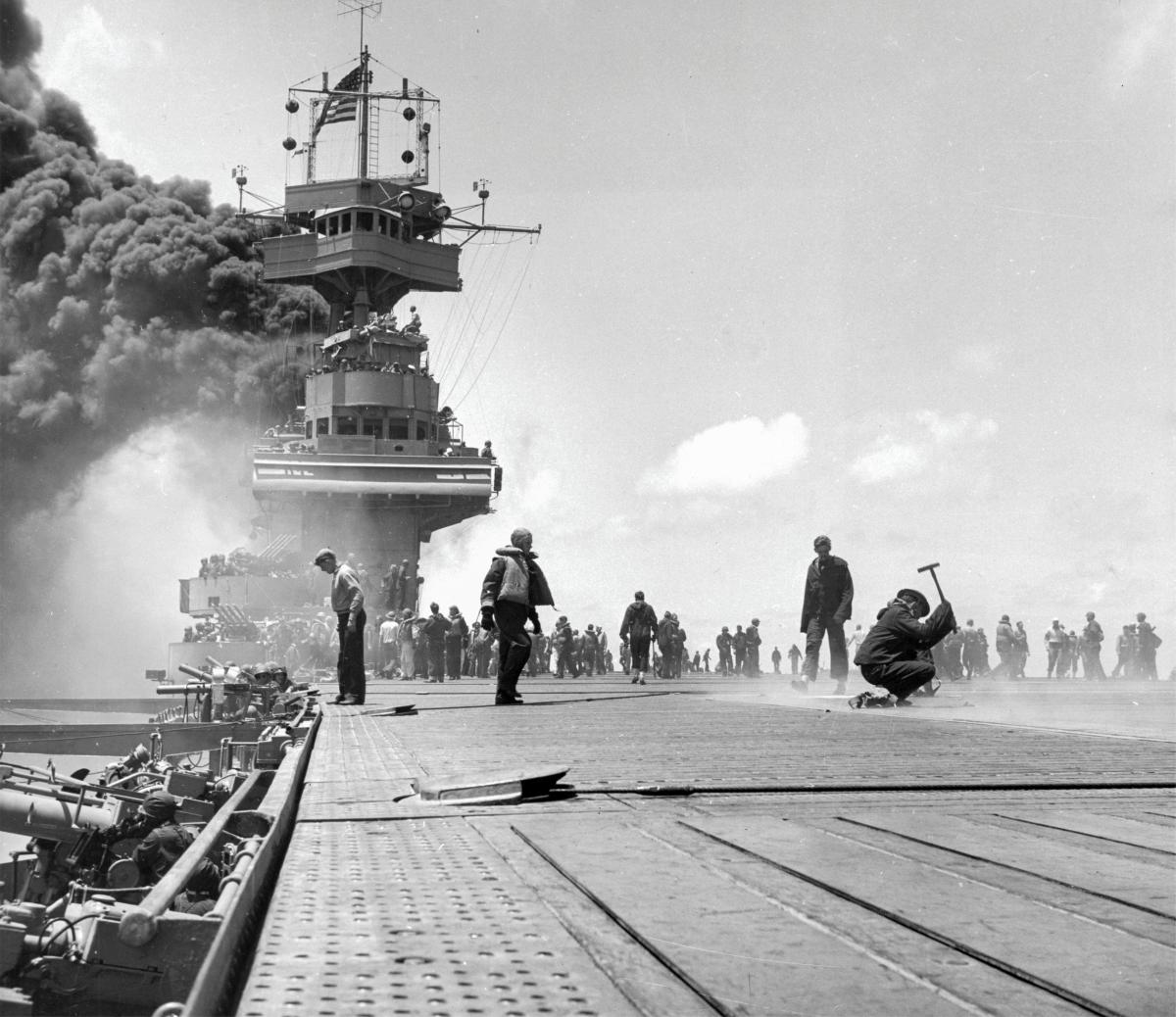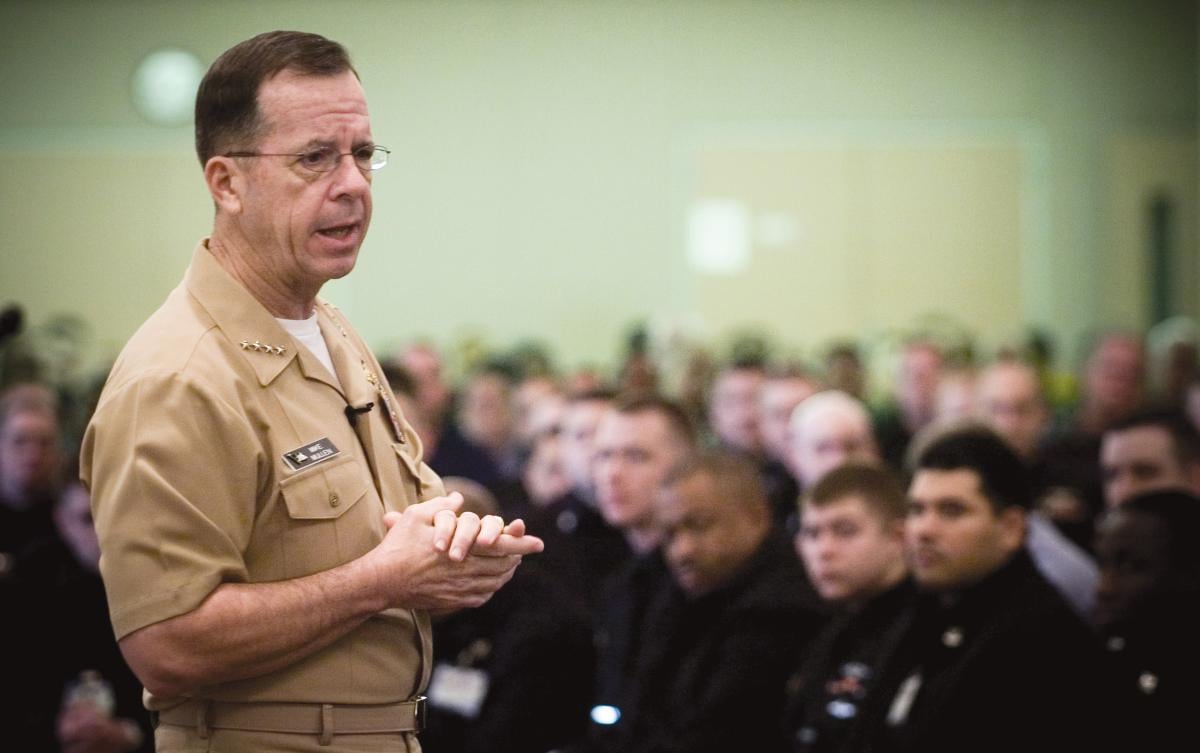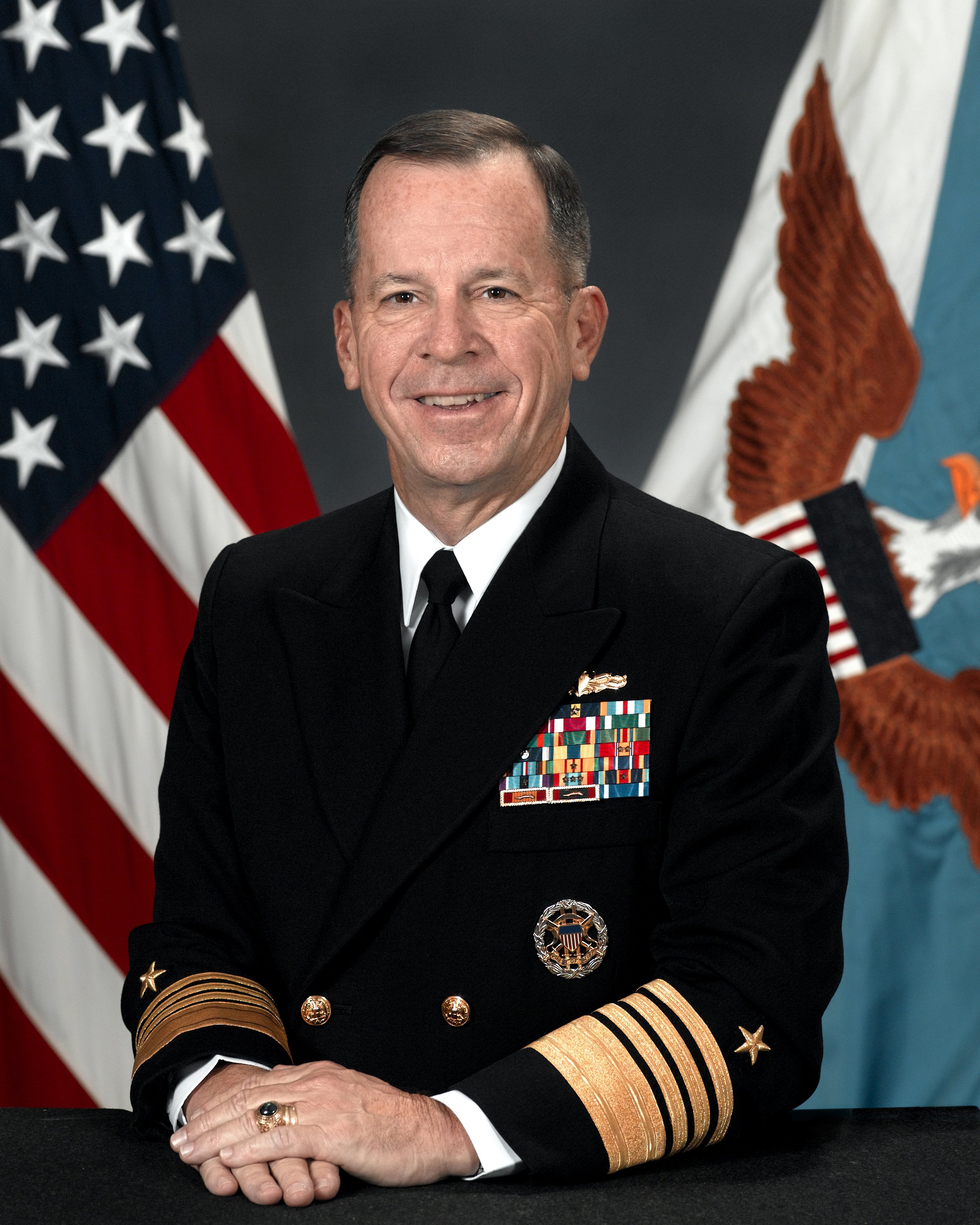There are plenty of good reasons to commemorate the Battle of Midway. It’s a big part of what the Navy is, a shining moment in the service’s history and one of the most significant battles of the 20th century. Historian John Keegan called it “as great a reversal in strategic fortune as the naval world has ever seen.” I just hope that in remembering it we don’t ever forget Sailors like Pete Montalvo.
I talked a little about Pete in a Midway speech last year. He was an aviation ordnanceman who manned an antiaircraft-gun mount on board the aircraft carrier USS Yorktown (CV-5) during the battle. Pete abandoned ship with thousands of others after two Japanese torpedoes had slammed into the carrier, and he would go on to live a long and productive life.
It was guys like Pete who won the war for us, and we ought to take at least a minute or two to remember what they did. They were heroes, shipmates, brothers even. And, if you ask me, they are the most important reason of all to pause and reflect on the victory at Midway.
Yes, Midway was a great turning point. And it enabled Americans to focus their attention on the fight in the Pacific as well as on operations in Europe, North Africa, and the Atlantic. But Sailors like Pete knew nothing of that at the time. No one did. Even Pacific Fleet commander Admiral Chester Nimitz hadn’t fully grasped the impact. “With Midway things were just getting started,” he recalled. “The march across the Pacific had not begun. After Midway there was no feeling that we had won the war. No doubt it was the all-important turning point, but we still had a tenacious enemy to deal with and a difficult job to do.”
He was right, of course. The war would rage on another three years. More ships would sink; more islands would change hands. More Sailors, Marines, Coast Guardsmen, and Soldiers—Japanese and American alike—would die. The end was clearly not in sight in June 1942.
We would learn many lessons from the battle, such as the importance of timely intelligence, the benefits of joint operations, and the power of decisive leadership. We would also test the mettle of the prewar Navy, for it was largely Sailors who enlisted before Pearl Harbor slugging it out at Midway.
Pete was one of them. He was actually at Pearl Harbor on 7 December 1941. He also fought in the Battle of the Coral Sea in May 1942. And he, like his shipmates, believed they were ready this time around.
When battle came, they reacted—no, acted—brilliantly. From the moment the first U.S. search plane found the lead elements of Vice Admiral Chuichi Nagumo’s carrier force, American Sailors fought hard, not confident of victory necessarily but confident in themselves and in their training.
It wasn’t an easy fight. The U.S. Navy lost the Yorktown, the destroyer Hammann (DD-412), and nearly 150 aircraft. More than 300 Sailors were killed or injured. But when you stack it up against Japanese losses (four carriers, a heavy cruiser, more than 300 planes, and some 2,500 casualties) there’s little room for doubt as to who won.
Grit and teamwork had something to do with it, shipmates helping shipmates. Pete remembered watching his gunnery officer, a young ensign by the name of John Lorenz, rallying his crew to action even as the Yorktown struggled to stay afloat. Later, in the water, Lorenz would keep Seaman Second Class William Sullivan’s hopes alive by talking about the girl he planned to marry. The ensign promised Sullivan that if the Sailor survived, Lorenz would name a son after him.
Sullivan made it. When Lorenz got home, he convinced the young and pretty Delight McHale to marry him. They named their second son William Sullivan. Lorenz hadn’t forgotten.
Neither did Pete. For many years after the war he made it a habit on Tuesday nights to pick up the phone and call as many of the Yorktown’s survivors as he could. Sometimes he would just let it ring once to remind them of their bond. If he did speak to someone, he always left off by saying, “Good night and good-bye.”
“On June 4, 1942, there were so many shipmates that I did not say it to,” Pete explained, “and then could not say it to. It is in their memory that I do this.”
Pete is gone now. But he and his shipmates are why we must always remember Midway. They pointed the way. They left us a legacy. We stand on their broad shoulders. We continue to learn from them.
Admiral Nimitz’s warning back then applies to us today. We, too, face a tough, determined, and, in many ways, more barbaric and unprincipled enemy. And we, too, cannot yet see the end of this long war on terrorism. There is difficult work to do.
But we can look back on the Sailors of Midway and take heart. Today’s Sailors, the ones the Navy has lost in this war, are just as strong and just as brave as those who fought and won World War II. We can honor them all, past and present, for their courage. It is in their memory that we do this, that we must do this.
That’s what the Battle of Midway really means.





